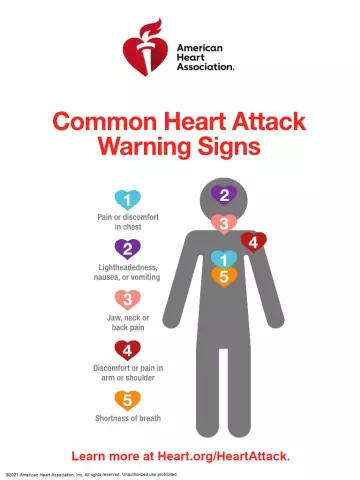- Author Rachel Wainwright [email protected].
- Public 2023-12-15 07:39.
- Last modified 2025-11-02 20:14.
First aid for electric shock

Electric shock causes electrical injury - a special kind of injury that is different from all others. Electricians, due to their professional activities, and children, due to their curiosity and lack of attention from adults, are most often subjected to electric shock.
The greatest danger from electric shock is its effect on the heart muscle. It is known that the contraction of the heart muscle occurs under the influence of electricity of weak power produced by the body itself. A powerful charge from the outside causes a malfunction in the heart, which can result in arrhythmia, atrial fibrillation and atrial paralysis, after which death occurs.
In addition, an electrical injury causes a burn, the severity of which may not be immediately assessed correctly, since electrical burns are specific - they do not spread superficially, as in the case of fire, but to a considerable depth, affecting subcutaneous adipose tissue, muscles, blood vessels, nerve endings and even bones … At the same time, the external manifestations of an electric burn are very small.
Another traumatic factor is that when a person is struck by an electric shock, he throws it away, i.e. electrical injury is often accompanied by mechanical injury - limb fractures, bruises, sprains and soft tissue ruptures.
Taking into account all the above factors, it becomes clear that electrical injury is a very serious type of damage to the body, it is very difficult for a non-specialist to assess the degree of damage, while there is an immediate threat to the victim's life. Therefore, as part of the first aid in the event of an electric shock, a doctor or emergency team should be called to the scene of the accident as soon as possible. Evaluation of the severity of electrical injury and its treatment takes place in a hospital.
Pre-medical first aid measures for electric shock
Before proceeding directly to providing assistance, you should assess the situation. The victim may still be under the influence of electric shock and it may not be safe to touch him.
It is advisable to immediately turn off the power source that caused the injury. If this is not possible, the source (usually a high-voltage wire) should be moved away from the victim using a dry object with low conductivity. It can be a sheet of cardboard, a dry branch of a tree, a plastic stick. Only then can the relief activities begin.
The algorithm of actions of the rescuer providing first aid in case of electric shock is as follows:
- It is necessary to verify the presence of respiration and cardiac activity. If there is no pulse in the carotid artery and the person is not breathing, CPR should be started immediately (mouth-to-mouth breathing, mouth-to-nose, chest compressions);
- If the victim is breathing, lay him down so that his head is below the legs (legs should be slightly raised). This is a necessary anti-shock measure;
- Areas of the body damaged by burns or secondary injury from a fall should be covered with a clean cloth to prevent infection. A sterile bandage or gauze is best suited for this purpose, if not, a clean linen towel, sheet, shirt. Do not use fluffy fabrics such as cotton wool, terry towels or woolen blankets;
- Further measures are to maintain the life of the victim until the arrival of an ambulance. In the cold season, it is necessary to ensure that frostbite does not occur, in the hot season - overheating.
If the victim is conscious, it must be borne in mind that electrical trauma can cause damage to the nervous system, including the brain, and also that not all symptoms of damage appear immediately.
You can't do without medical help
The peculiarity of injuries from electric shock is their depth and effect on almost all tissues and organs located along the electric loop. That is why, even if at first glance it seems that everything worked out, in no case should you refuse hospitalization and a medical examination. Even if the victim himself believes that the provision of first aid in the event of an electric shock was sufficient, rescuers should insist on an immediate visit to a doctor. Otherwise, it is possible that organs and tissues that have undergone electrical injury will work with gradually increasing impairments, which can lead to the death of a person who has received a seemingly non-fatal electric shock, several days after the injury.
Found a mistake in the text? Select it and press Ctrl + Enter.






